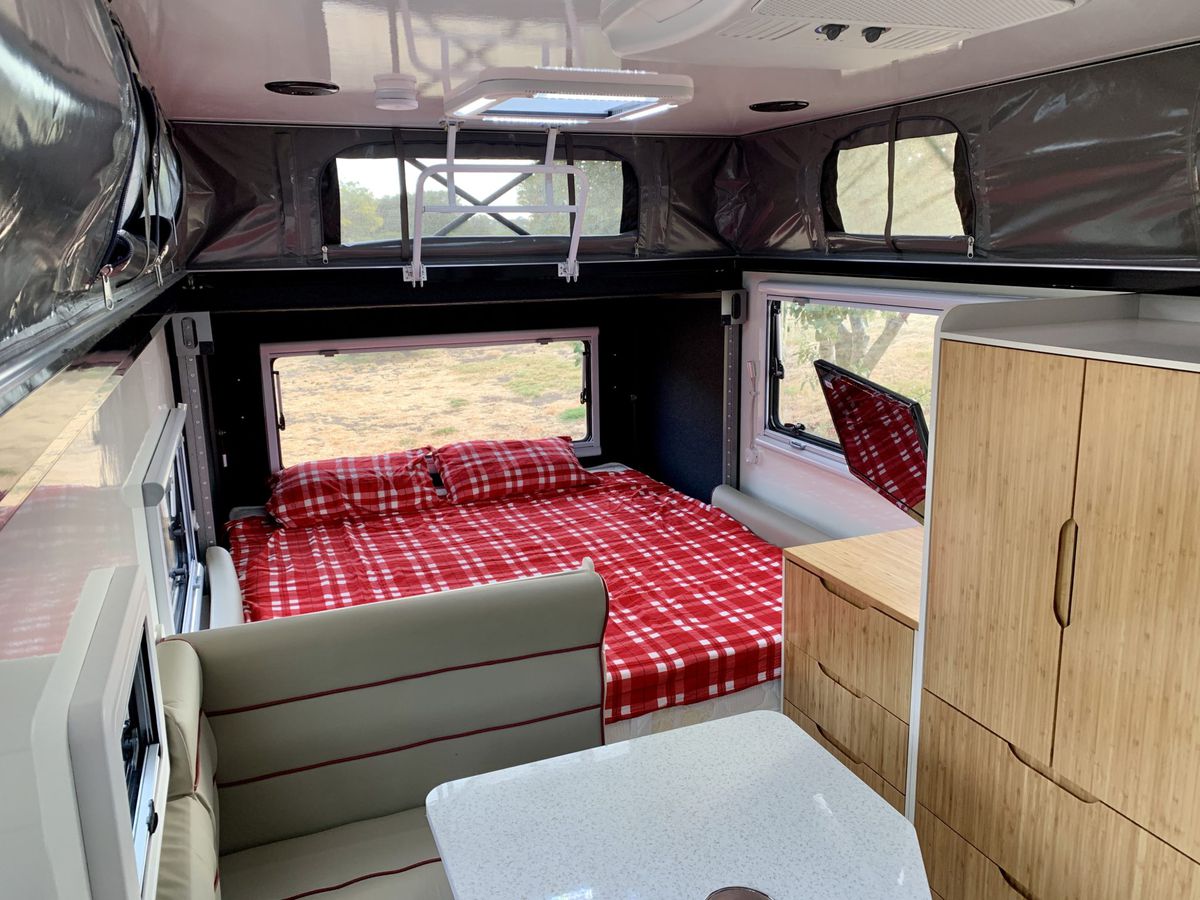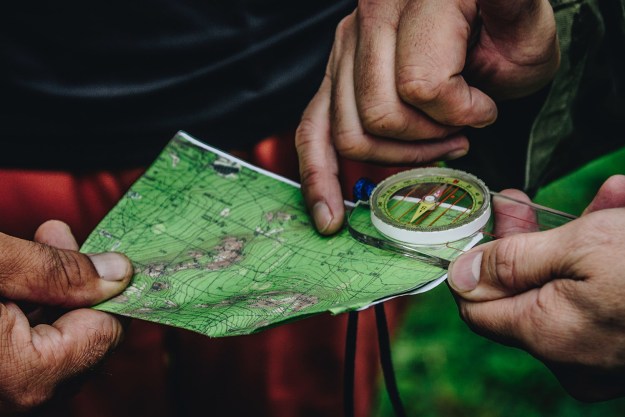Until recently, most off-road travel trailers prioritized function over comfort. Today’s best adventure towables, however, promise all the amenities of a modern, studio apartment atop a go-anywhere chassis. This year, British newcomer Opus is seriously upping its game with a unique hybrid caravan designed for off-grid camping in style.
New for 2019, the OP15’ Hybrid Caravan is designed for “tough luxury.” From the outside, the trailer’s off-road prowess is evident, thanks to mud-rated tires, twin rear-mounted spares, a fully galvanized chassis, powder-coated wheel arches, and a built-in utility area with jerrycan holders. Along with a ruggedized suspension and jacked-up ground clearance, it’s a perfectly capable, go-anywhere towable.

The OP15’s rugged exterior belies a fully loaded, arguably “luxurious” interior with all the comforts of home. The spacious living quarters feature a king-size bed and a full bathroom with a premium shower, chemical toilet, and sink. Standard exterior kitchen amenities include a four-burner gas range, stainless steel sink, and slide-out chopping board and prep deck. Plus, the massive Dometic CFX75 electric fridge/freezer combo can accommodate days’ worth of food for even the hungriest campers. The list of technological conveniences includes a four-speaker entertainment system, 12V television, and ample USB and 110V sockets throughout. With a 63-gallon freshwater capacity, three AGM batteries, and a 300-watt integrated solar system, the OP15’ is ready for an extended period of off-grid camping. Premium materials like leatherette seating and bamboo cabinetry elevate the design above most typical off-road trailers.
Opus first made a splash in the travel trailer industry in 2016 with the debut of Air Opus — a package available as an add-on to its existing models. The revolutionary option features a pop-up-style design with a built-in inflatable tent that sets up in less than two minutes. Once unfurled, Air Opus-enabled trailers offer more than 120 square feet of living space with eight-foot ceilings and skylights that flood the interior with natural light.
Not surprisingly, the swanky, off-road travel trailer doesn’t come cheap. With a base price just under AUD $50,000 (approximately USD $34,400) — a price that quickly balloons with road costs and other essential options — the OP15’ is no entry-level towable.
If money is truly no object, these ultra-luxurious overland RVs are like off-road-ready mansions on wheels.
Editors' Recommendations
- 7 Retro-Cool Airstream Resorts in America Worth Road Tripping For
- Journey Farther with the Mobi X Compact, Off-Road-Ready Teardrop Trailer
- Lotus Caravans’ 2022 Off Grid Travel Trailer Is Designed to Go Almost Anywhere
- ‘Off the Road’ Book Review: Van Life Off the Beaten Track


